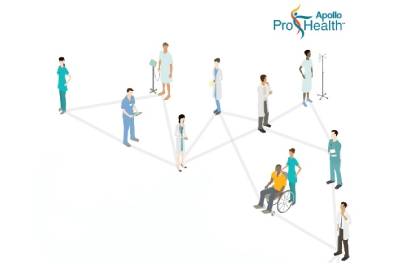
What is Non-Alcoholic Fatty Liver Disease (NAFLD)
Non-Alcoholic Fatty Liver Disease (NAFLD) is a condition where fat builds up in the liver even without alcohol take. When more than 5% – 10% percent of the liver’s weight is made up of fat, it is called a fatty liver (Steatosis).
Fatty liver has risen alarmingly owing to genetic predisposition (insulin resistance) coupled with changing lifestyle. Unless problem is addressed in time, it can result in significant liver damage for those affected
Who is primarily at risk?
Patients who have the following – Type 2 Diabetes, High Blood Pressure, are Overweight or suspected Metabolic syndrome.
What is Metabolic Syndrome?
This is a condition that includes the presence of central obesity (fat in the belly area), Hypertension, Diabetes or impaired fasting sugar, high Triglycerides (a type of blood fat) and low HDL (the good cholesterol). Patients with metabolic syndrome have a higher likelihood of fatty liver disease and are at greater risk of having progressive liver disease.
Stages of NAFLD and Risks
Fatty liver exists in four stages
Stage 1 Simple fatty liver (simple steatosis) – when the liver has excessive fat of more than 10% without any significant damage or scarring. The majority of people are in this stage, and usually do not develop any serious liver damage.
Stage 2 Non-Alcoholic Steatohepatitis (NASH) – this is a more serious. The liver gets inflamed, followed by liver cell swelling and damage, leading to cell death. This can progress to liver fibrosis, liver cirrhosis, requiring a liver transplant
Stage 3 Fibrosis – some people with NASH can develop scarring of the liver called fibrosis. This gradually replaces healthy liver tissue, and can lead to further liver damage.
Stage 4
Cirrhosis – this is the most severe stage where the entire liver is replaced with bands of scar tissue. The liver becomes hard and may shrink. Over time, this often leads to loss of liver function, cause liver failure, and even liver cancer.
NASH is a serious complication and can occur in up to 20% of patients with fatty liver. NASH is more likely to occur in patients older than 50, women and those with full blown metabolic syndrome. NAFLD increases the risk of liver damage and is associated with an increased risk of cardiac disease and diabetes
Non-Alcoholic Fatty Liver Disease Symptoms
NAFLD is often silent – which is why it is important to perform the necessary tests regularly to track the conditions of the liver. Patients do not experience any specific complaints in the early period, and even with advancing fibrosis, the disease may not cause any problems. In the later stages, patients may feel non- specific symptoms such as vague right sided abdomen pain, fatigue, tiredness, and some mild weakness.
It is only after developing cirrhosis and liver failure, that patients may experience obvious problems such as swelling of feet or abdomen, blood vomiting, impaired memory and periods of confusion, easy bruising or excessive bleeding after minor injuries, loss of muscle mass, increasing jaundice, frequent infections and eventually coma.
Liver cancer too can develop silently, and many times diagnosed only on routine scans such as ultrasound.
Non-Alcoholic Fatty Liver Disease Diagnosis
NAFLD is initially diagnosed by ultrasound and blood tests may show high levels of liver enzymes (liver function tests). Additional tests are often done to rule out other liver diseases.
How can NAFLD be assessed?
Ultrasound picks up fat when it is more than 30%. Once fatty liver has been diagnosed the key is to determine whether the patient may have any serious liver disease. Liver biopsy is sometimes used to diagnose these advanced stages of the disease.
The level of fibrosis can now be assessed by noninvasive tests, including blood tests and scans such as Fibroscan. This is a novel method, now available at Apollo Chennai, to accurately diagnose the level of fibrosis and early stages of cirrhosis.
Early diagnosis of significant fibrosis is very important as it identifies patients who are at risk for serious liver disease, and appropriate treatment can be given to them to prevent further damage. Since the test is non invasive, repeat examinations can also be done periodically to assess improvement.
Non-Alcoholic Fatty Liver Disease Treatment & Prevention
Eating a healthy diet and exercising regularly may help prevent liver damage from the start or reverse it in the early stages.
- Lose weight, if you are overweight or obese
- Have a high protein & low carbohydrate diet
- Lower your cholesterol and triglycerides
- Control Diabetes
- Avoid alcohol
- Exercise regularly & increase physical activity. 30 minutes of exercise at least five days in a week is recommended.
- Seek an appointment with a liver specialist to assess your risks, and take appropriate treatment
Non alcoholic fatty liver disease is a very common but important problem, as up to 20% can develop serious liver damage. It is important for those with fatty liver to have periodic assessment of risk factors and the stage of liver disease, as this is the best way to prevent complications. The key is also in maintaining a healthy lifestyle with proper diet, plenty of exercise and weight management
Read more about treatment for liver diseases at Apollo Hospitals Click here







